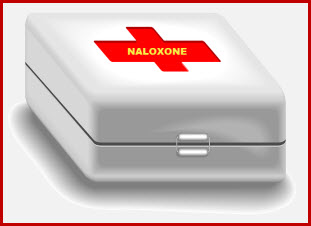New Evzio Naloxone Kit Designed For Caregivers
A new anti-opiod kit containing automatically injected Naloxene has been developed for caregivers. The kit also includes voice prompts and training tools so people can practice injections to the point that they may be able to deliver them during the high-stress moment when the actual treatment is needed. While the Evzio is an official FDA approved kit, there are other naloxene kits out there devised by medical personnel in the event of accidental overdoses.
 A number of high profile overdoses and deaths may have prompted the FDA to approve the kits more quickly. In the year 2010 there were more than fifteen thousand overdose deaths, and many of these were attributable to prescription painkillers as well as illegal narcotics such as heroin. Naloxene, also known by the brand name Narcan, is often used in hospitals and by paramedics to revive patients. Authorities believe that use by caregivers or relatives of known drug addicts may prevent more deaths in the event of a suspected drug overdose. There are also many patients with chronic pain and high dose prescriptions who are at a risk of overdosing.
A number of high profile overdoses and deaths may have prompted the FDA to approve the kits more quickly. In the year 2010 there were more than fifteen thousand overdose deaths, and many of these were attributable to prescription painkillers as well as illegal narcotics such as heroin. Naloxene, also known by the brand name Narcan, is often used in hospitals and by paramedics to revive patients. Authorities believe that use by caregivers or relatives of known drug addicts may prevent more deaths in the event of a suspected drug overdose. There are also many patients with chronic pain and high dose prescriptions who are at a risk of overdosing.
How Naloxone Works
Naloxone works by dislodging opoids from their receptors. When receptors are occupied during an overdose, breathing can be slowed or stopped and but naloxene displaces. It is very important to clarify that a person who has not been breathing for some time may already be unrevivable, and a revived person may have brain and tissue damage from lack of oxygen. Even a trained physician or emergency responder would likely have the same result at this point. However, a faster response by caregivers and family members is most likely to have a positive result, so you should not be afraid to administer the kit on an unresponsive person.
Training for kit usage
The Evzio kit differs from most epi-pen technology in that it is rectangular, gripped in the hand, and a cover is pulled off the bottom. Afterward, the injector side is held to the patient's body for a number of seconds.
Recognizing overdose symptoms is another important part of the training. If a person has pinpoint pupils, difficulty breathing, and you are not able to awaken the person then these may be signs of an OD. Literature indicates that if you would normally call 911 or its equivalent, then you should first use the treatment and then call for emergency services.